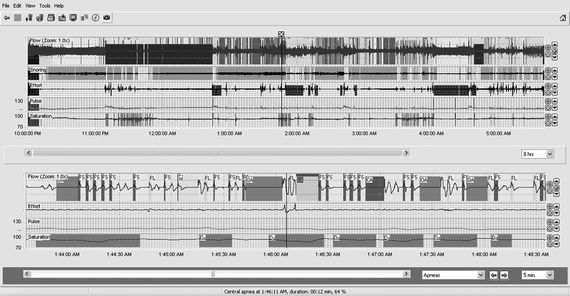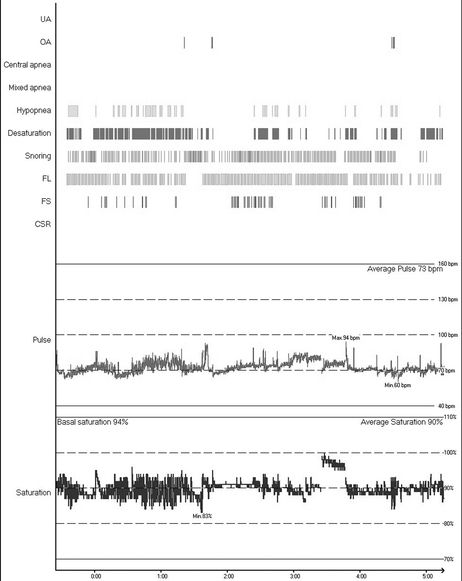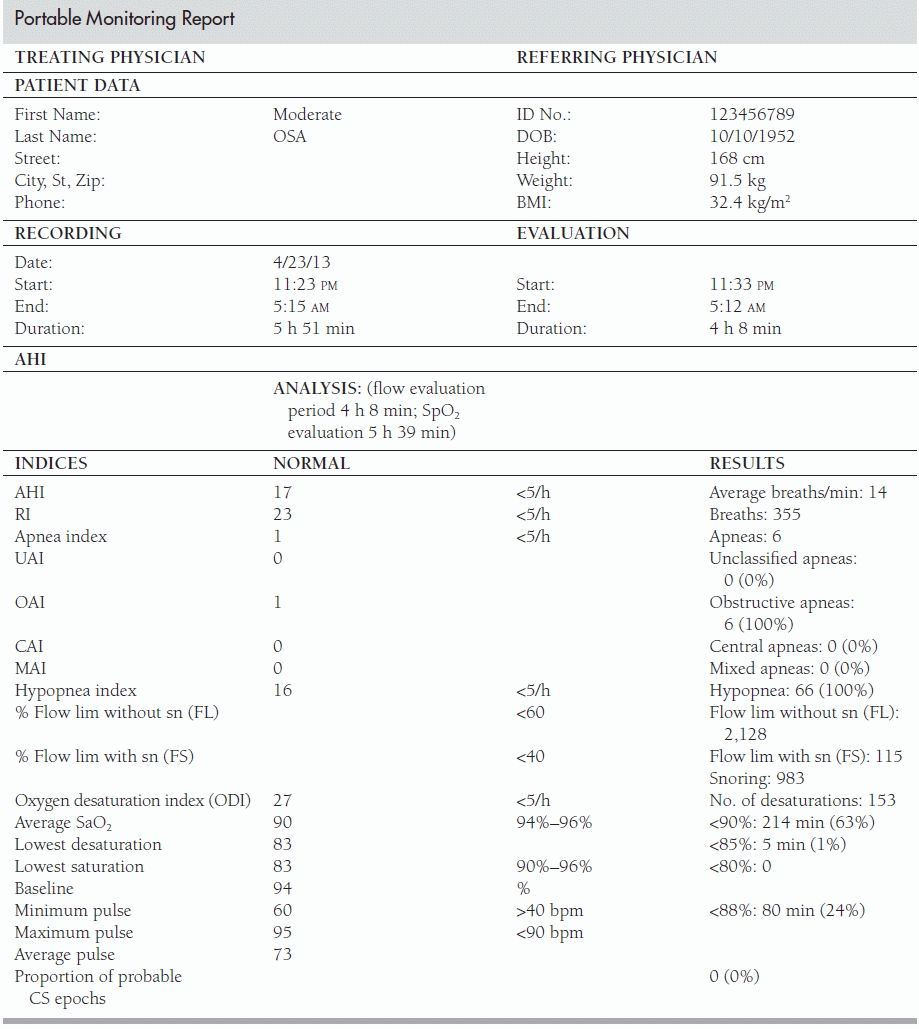36
Portable Monitoring
LAREE FORDYCE
NOTE: This chapter corresponds to Chapter 42 in Fundamentals of Sleep Technology, 2nd edition.
1. Which of the following is NOT a guideline of the American Academy of Sleep Medicine (AASM) for unattended portable sleep apnea monitoring?
A. Comprehensive sleep evaluation not required
B. No comorbid medical conditions, such as heart failure or neuromuscular disease
C. Clinical suspicion of periodic limb movement disorder or narcolepsy
D. No clinical features of obesity hypoventilation syndrome (OHS)
2. List three advantages of portable sleep apnea monitoring compared to polysomnography.
3. List three disadvantages of portable sleep apnea monitoring compared to polysomnography.
4. Portable sleep apnea monitoring includes which of the following tests? Identify all of the correct choices.
A. Level 1 = Attended PSG
B. Level 2 = Unattended PSG
C. Level 3 = Cardiorespiratory monitoring
D. Level 4 = Continuous single or dual bioparameter recording
5. In portable sleep apnea monitoring, a minimum of four channels are recorded. These channels include:
A. Chest effort, heart rate, oxygen saturation, snoring
B. Chest effort, abdominal effort, airflow, electrocardiography
C. Chest effort, airflow, oxygen saturation, electrocardiography
D. Oxygen saturation, heart rate, airflow, snoring
CASE STUDY NO. 1 FOR QUESTIONS 6 AND 7
A 57-year-old man with hypertension and depression is referred for possible obstructive sleep apnea. His BMI is 48 kg/m2. A portable sleep apnea study shows that the patient has Cheyne-Stokes respiration (Fig. 36-1).

Figure 36.1
6. What should you do for this patient?
A. Start auto-titrating positive airway pressure (APAP) therapy.
B. Repeat polysomnography with positive airway pressure (PAP) titration study.
C. Start supplemental oxygen therapy.
D. Start adaptive servo ventilation.
7. This patient is a good candidate for portable sleep apnea monitoring. True or false?
CASE STUDY NO. 2 FOR QUESTION 8
A 23-year-old woman presents with snoring and possible obstructive sleep apnea (OSA). Past medical history is unremarkable. Her BMI is 24 kg/m2. Results of her portable sleep apnea test are shown in Figures 36-2 and 36-3 and Table 36-1.

Figure 36.2

Figure 36.3
Table 36-1

Stay updated, free articles. Join our Telegram channel

Full access? Get Clinical Tree




